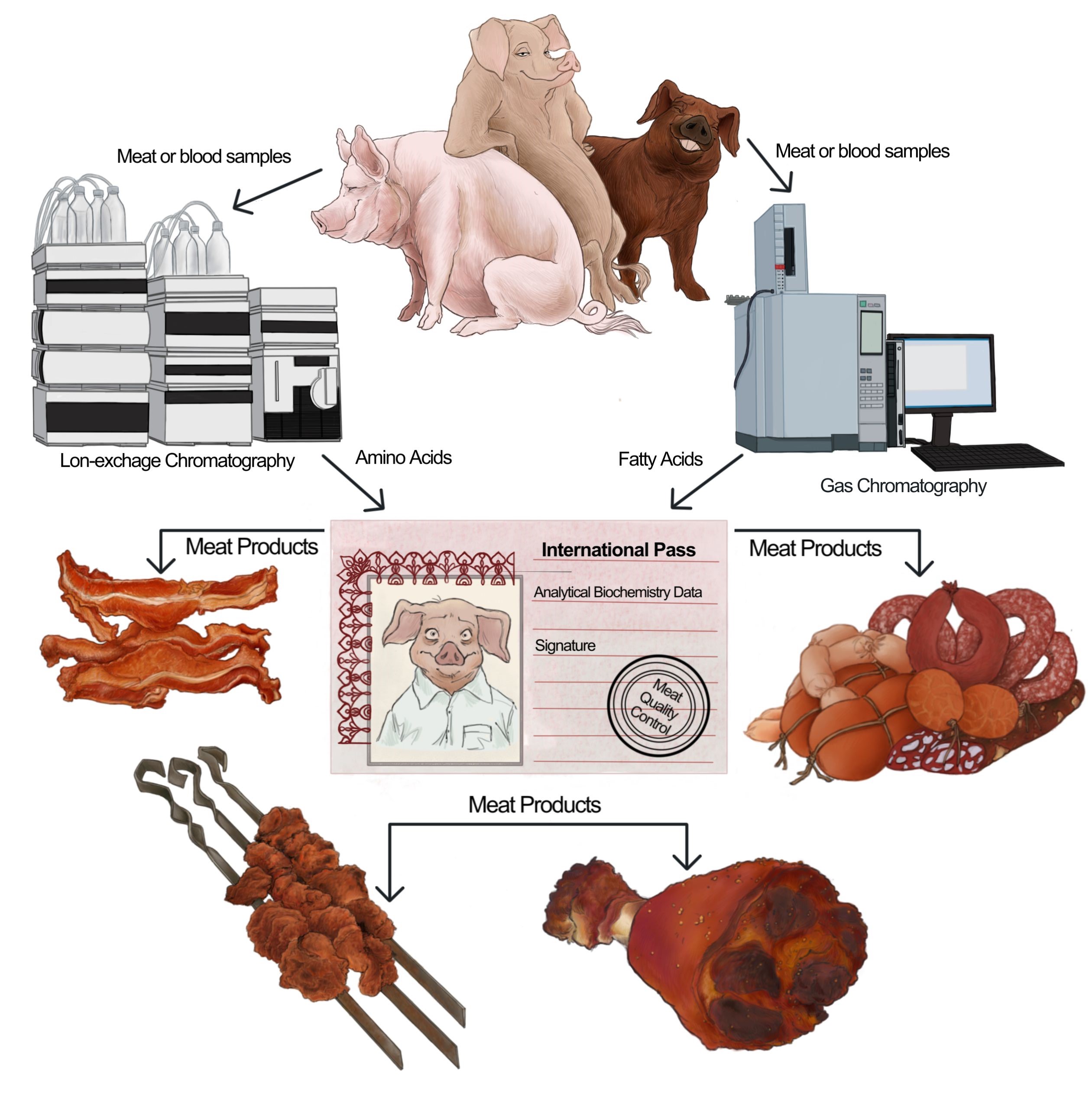The increasing demand for high-quality livestock products dictates to develop approaches to assessing the composition of the fatty acids (CFAs) and amino acids (CAAs) in animal tissues. The review considers the following issues: chromatographic methods for the determination of CAAs and CFAs of pig tissues; factors influencing the CAAs and CFAs of pig tissues; methods of regulating CAAs and CFAs of pork using nutritional factors; the effect of CAAs and CFAs on formation of meat properties. The main methods for determining CAAs or CFAs are the ion-exchange or gas chromatography, respectively. The total FA amount and individual FAs have significant effects on the tenderness, taste, color and juiciness of pork meat (due to the different melting points of particular fatty acids, formation of lipid oxidation products during cooking, etc.). Muscle proteins of pigs with regulated fatness differ also in CAAs (decreasing by increase in “pork fat” and decrease in the protein’s amount. The significance of this review is also determined by high popularity of pork in Russia and in a number of other countries of the world.

